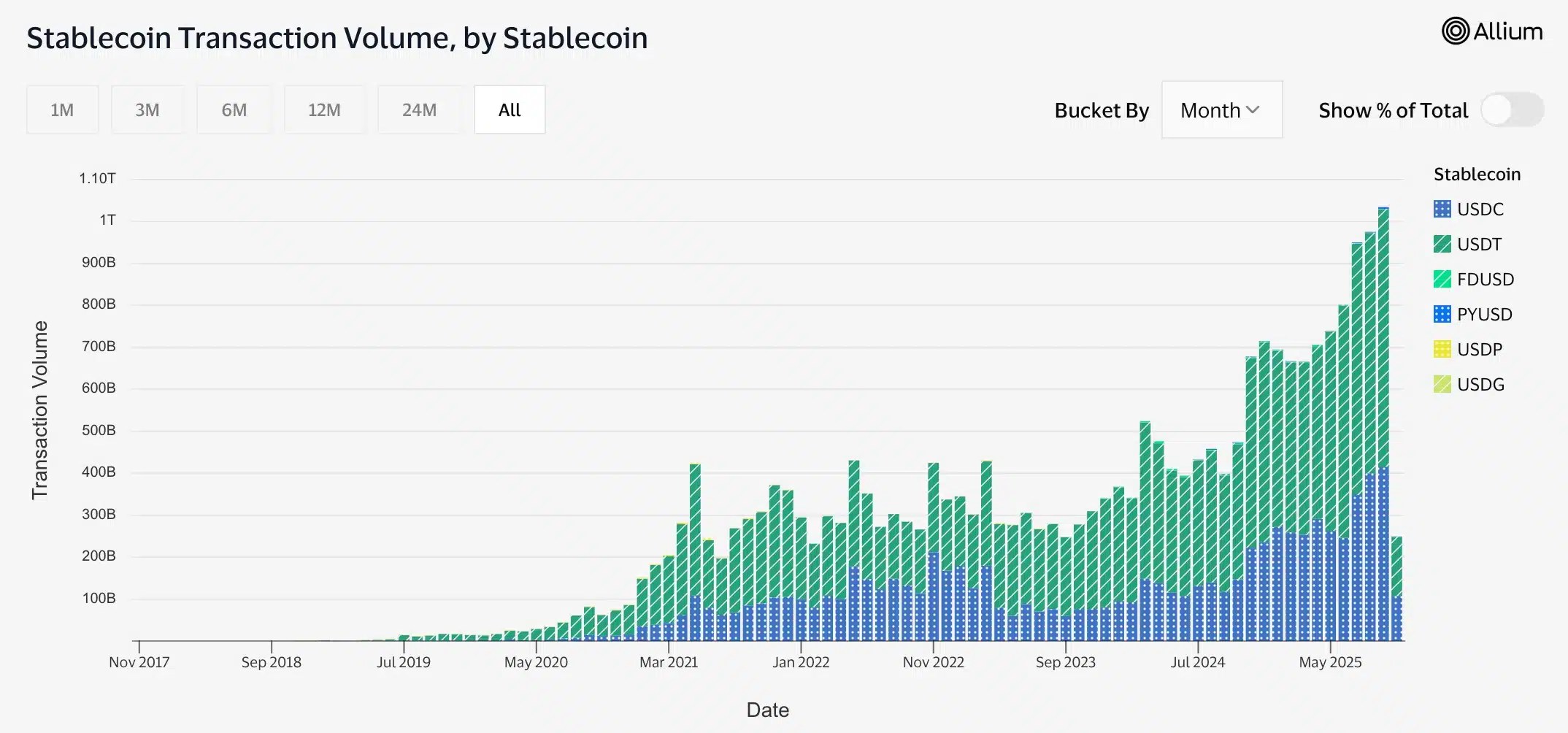Key Takeaways
What is Tether’s current stake in Juventus FC?
It holds a 10.7% stake in Juventus FC, making it the club’s second-largest shareholder after Exor.
Why is Tether pushing for board representation?
Despite its sizable stake, the stablecoin issuer was excluded from key decisions and a €110 million funding round, where Exor already contributed nearly €30 million.
Tether [USDT], the world’s largest stablecoin issuer, is once again stepping beyond the crypto arena, this time into the boardroom of Italian soccer giant Juventus FC.
Despite being the club’s second-largest shareholder, Tether has reportedly been excluded from key governance decisions and an upcoming capital raise.
Tether’s plan of action
According to Reuters, Tether will propose its own list of board candidates at Juventus’ shareholder meeting on the 7th of November.
Earlier this year, the stablecoin giant acquired a 10.7% stake in the Turin-based club. That made it Juventus’ second-largest shareholder after Exor.
Meanwhile, Exor, the Agnelli family’s Dutch investment firm, controls about 65% of Juventus and manages over $40 billion in assets.
That imbalance in influence has sparked tensions.
Despite its stake, Tether was excluded from governance talks and a €110 million capital raise. Reportedly, Exor has already contributed €30 million to that round.
Hence, now, Tether plans to join the funding round and submit its own board candidate list along with proposed “governance changes”.
Legal ground for Tether’s challenge
Under Italian law, shareholders holding at least 10% can propose alternative board lists, a clause that allows Tether to challenge Exor’s control.
Juventus, which reported a $58 million loss for the fiscal year ending June 2025, faces mounting frustration from minority shareholders over its financial decline.
While Exor has said it will not engage with crypto ventures, Tether’s push could reignite debate over digital assets’ place in traditional sectors. That debate coincides with USDT’s rising dominance.
Tether’s dominance remains unshaken
Meanwhile, Visa’s on-chain analytics revealed that USDT processed $613.56 billion in transactions in September. That was well above USDC’s $415.68 billion, with other stablecoins lagging far behind.


Source: Visa on-chain analytics
This momentum coincided with Tether’s latest strategic leap – the launch of USA₮. The U.S.-regulated, dollar-backed stablecoin was developed under the GENIUS Act signed by President Donald Trump in July.
All this together further strengthens its compliance stance in the U.S. and reinforces its foothold in regulated finance.